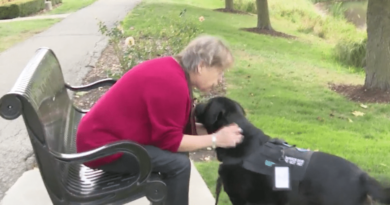New Hope for Better Macular Degeneration Treatments
By Robert Preidt
HealthDay Reporter
MONDAY, Feb. 22, 2021 (HealthDay News) — A number of new treatments for age-related macular degeneration (AMD), a progressive eye disease, are under development. AMD is a leading cause of vision loss in older people.
About 11 million Americans have AMD, which affects part of the eye that allows you to see fine detail. There are two types: wet and dry. Wet AMD is treated with eye injections every month or two, and dry AMD with antioxidant vitamins, according to the American Academy of Ophthalmology.
“While our current treatments have made a huge difference in the lives of hundreds of thousands of people, new treatments offer hope to patients whose AMD previously could not be treated,” said retina specialist Dr. Sunir Garg, the academy’s clinical spokesman.
“New treatments will also help patients receive beneficial treatment more conveniently than ever before,” he added in an academy news release.
While treatment with antioxidant vitamins can help reduce vision loss in many dry AMD patients, there is no treatment for those with late-stage disease. But a number of promising clinical trials are underway.
These include investigations of two drugs that target a part of the immune system long identified as a major factor in AMD.
The drugs, which are injected directly into the eye, have been proven safe in people. Results on whether they significantly improve vision are expected in about a year, according to the academy.
Replacing vision cells that begin to die in late stages of dry AMD is also under investigation. While the treatment shows early promise, there’s a long way to go before these stem cell therapies might be ready for clinical use.
A major contributor to wet AMD is vascular endothelial growth factor (VEGF), which causes formation of weak blood vessels that leak into the retina.
Anti-VEGF injections appeared about 15 years ago to treat the disease. While clinical trials show that such treatment is more than 90% effective against severe vision loss, the real-world rate is closer to 50%, because patients don’t get injections as often as they should, the academy said. Most patients require an injection every four to eight weeks.
Continued
A promising new method is a tiny, refillable drug reservoir that is surgically implanted in the eye, just under the eyelid. The device is filled with a concentrated version of an anti-VEGF drug and delivers it to the back of the eye over an extended period.
Instead of an injection every six to eight weeks, patients might get a refill once or twice a year. Research shows that many people treated this way go 15 months between treatments.
Also under investigation are gene therapies to enable the eyes to make their own anti-VEGF medicine, the academy noted.
More information
The U.S. National Eye Institute has more on age-related macular degeneration.
SOURCE: American Academy of Ophthalmology, news release, Feb. 11, 2021





best ed treatment https://edpillsotc.store/# – non prescription ed drugs